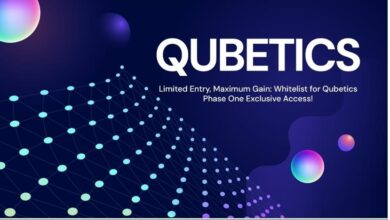From Vision to Execution: Gurmat Bhatia’s Strategy for Tech-Business Alignment

In the fast-paced arena of contemporary business, the synchronization of technology with overarching business objectives is not merely a strategic benefit; it’s an essential component for lasting success. This alignment ensures that technological innovations advance in ways that support and enhance business goals, leading to increased efficiency, competitiveness, and sustained progress. Amidst rapid technological progress, a constantly shifting competitive landscape, and the urgent need for internal capabilities to keep pace, companies today face a myriad of complexities.
Gurmat Bhatia, Executive Director of Engineering at Ingram Micro, exemplifies the dual mastery of both business and technology domains essential to navigating these complexities. With over 18 years of experience, Gurmat has spearheaded large-scale digital transformations, leveraging cloud-native technologies and real-time data integrations. His career is distinguished by significant achievements, including the design of a global supply chain order tracking system and the implementation of a global pricing and discount management solution. Gurmat’s approach to technology strategy is underpinned by his belief in harnessing technology to solve intricate business challenges and deliver exceptional customer experiences..
Aligning technology strategies with business goals
The alignment of technology strategies with business goals is vital for enabling successful digital transformations. Gurmat’s methodology begins with an in-depth understanding of the company’s business goals and objectives. This process involves a comprehensive analysis of current market trends, technological advancements, the competitive landscape, and internal capabilities. Such detailed analysis helps in crafting strategies that are not only aligned with business objectives but are also adaptable to changes. Gurmat notes, “Communication and collaboration are crucial throughout this process, ensuring that everyone from business leaders to technical teams is on the same page.”
Gurmat adheres to best practices to ensure IT programs consistently align with business objectives. Establishing a governance board that reviews and vets IT projects for alignment with business goals is an effective practice. For instance, aligning the pricing and discount management system with the sales and finance departments led to more streamlined operations and quicker quote generation times. This alignment resulted in handling over 10 million price calls daily, enhancing both operational efficiency and customer satisfaction.
Building effective roadmaps
Creating a comprehensive technology roadmap starts with delineating the long-term vision, then breaking it into achievable milestones. Gurmat stresses the importance of design thinking sessions to identify pain points and opportunities. These insights are then categorized into short-term, mid-term, and long-term goals, ensuring alignment with the company’s strategic objectives.
An exemplar of this approach is the roadmap developed for the pricing solution at Ingram Micro. Gurmat explains, “The roadmap for our pricing solution included incremental execution plans with clearly defined resource needs, dependencies, and deliverables.” This structured approach facilitated the migration from legacy systems to a cloud-native architecture, leading to significant improvements in efficiency and customer satisfaction..
Tackling legacy migrations
Migrating legacy processes to modern scalable applications presents multiple challenges, such as compatibility issues, data migration, and resistance to change. Gurmat faced these hurdles head-on with a strategic and phased approach. “One major challenge was ensuring that all stakeholders were on board with the transformation,” Gurmat explains. To address this, the process began with pilot projects that showcased the benefits of the new systems, building confidence and buy-in among stakeholders.
A key tactic during the migration to cloud-native applications was to ensure minimal disruption by running both legacy and new systems in parallel until the transition was fully validated. This approach allowed for real-time troubleshooting and ensured that the new systems were functioning correctly before fully phasing out the old ones. “Continuous communication and training sessions helped in managing change and ensuring a smooth transition,” Gurmat adds. These measures were crucial in overcoming resistance and ensuring that the migration was as seamless as possible, ultimately leading to more efficient and scalable operations.
Optimizing security and app footprints
Enhancing security and optimizing the application footprint are crucial components of digital transformation, essential for protecting data integrity and boosting performance. Gurmat emphasizes the importance of these aspects, stating, “Enhancing security and optimizing the application footprint are critical during digital transformation to protect data integrity and improve performance.” In a recent digital transformation initiative, Gurmat’s team implemented robust security protocols, including data encryption and vulnerability scanning, to ensure the integrity and security of their systems.
Additionally, Gurmat focused on optimizing the application footprint by consolidating redundant processes and migrating to scalable cloud-based solutions. This strategic vision not only safeguarded their systems but also reduced operational costs and enhanced performance, creating a secure and efficient digital environment.
Integrating technology governance and compliance
Incorporating technology governance and compliance into strategic vision ensures all technology initiatives align with regulatory requirements and internal policies. This involves establishing a governance board, conducting regular audits, and maintaining constant vigilance to adapt to new regulations.
A critical example of this approach was during the implementation of a global pricing solution. “Ensuring compliance with various international regulations required meticulous planning and coordination,” Gurmat explains. By integrating governance and compliance from the project’s outset, Gurmat’s team was able to navigate the complexities of international regulations smoothly. This proactive approach maintained both regulatory adherence and project integrity, demonstrating the importance of embedding governance and compliance into strategic planning for successful digital transformations.
Defining success metrics
Measuring the success of technology strategies requires a set of well-defined metrics that align with business performance indicators. Gurmat explains, “Measuring the success of technology strategies involves using metrics such as system uptime, user adoption rates, and process efficiency improvements.” Establishing Key Performance Indicators (KPIs) at the beginning of each project is crucial, as these KPIs are directly tied to business goals.
For example, in the order tracking system, success was gauged by reduced customer inquiries and increased self-service usage. Continuous monitoring and feedback loops are crucial to ensuring these metrics align with overall business performance indicators. This approach guarantees technology strategies not only meet objectives but also enhance broader business success.
Future-proofing Tech strategies
Future-proofing technology strategies requires staying ahead of trends, continuous learning, and fostering innovation. As Gurmat highlights, “Leverage open-source technologies and then build prototypes” to test and integrate new advancements. This proactive approach ensures that technology strategies are adaptable to evolving business needs and technological advancements.
For instance, adopting cloud-native technologies and microservices architecture ensured scalability and flexibility. This approach facilitated the integration of machine learning into the order tracking system, catering to the need for predictive analytics. Gurmat’s strategy not only enhanced current capabilities but also prepared the organization to adapt to future challenges, underlining the importance of innovation and foresight in technology planning.
As technology evolves at an unprecedented pace, the alignment of technological advancements with business goals becomes increasingly vital. Gurmat’s extensive experience highlights that the intersection of technology and business objectives can drive remarkable growth and operational efficiency. Engaging with stakeholders and ensuring technology advances business initiatives while staying tuned to market changes fosters resilience and agility, essential traits in a competitive market. Gurmat’s advice is unequivocal: businesses must remain vigilant and adaptive, continually refining their technological frameworks to not only survive but flourish.





